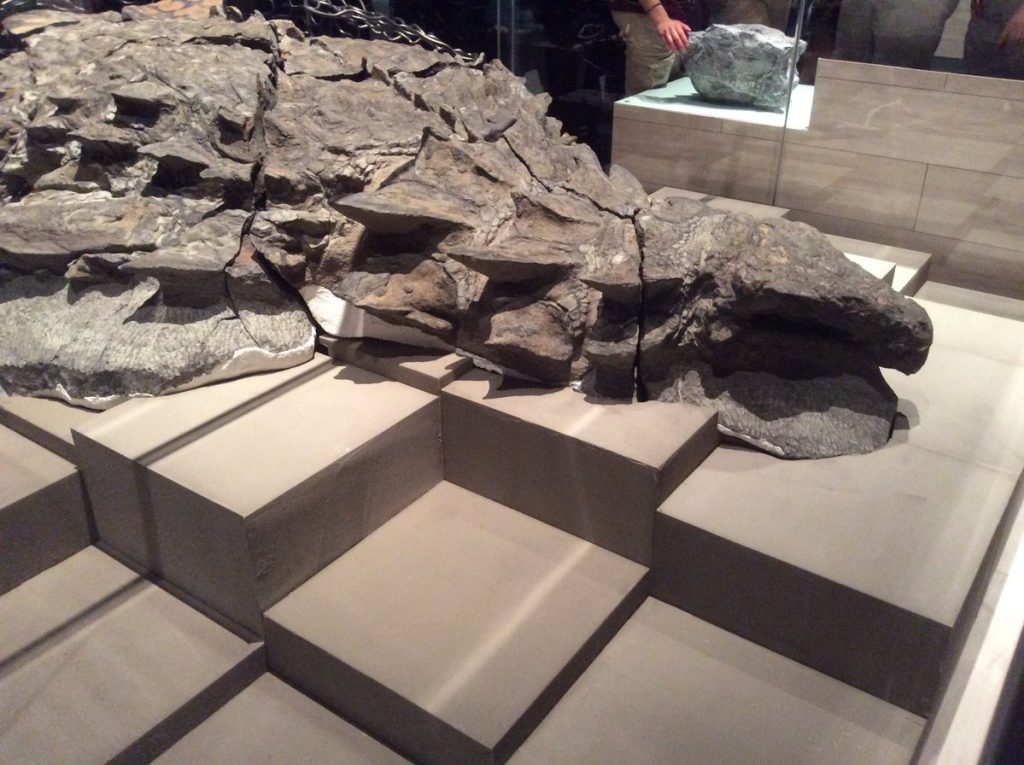Fossil of new dinosaur species goes on display. It is 112 million years old
A special dinosaur fossil went on display in Alberta. It belongs to the newest species ever discovered and it is also the oldest, dating back some 112 million years ago.
A new exhibit at the Royal Tyrrell Museum of Palaeontology in Alberta displays a very special dinosaur fossil. Part of the museum’s new exhibit, entitled Grounds for Discovery, showcasing some of the most significant fossils that have been discovered through industrial work, this particular piece belongs to the news species of dinosaur ever discovered and it is also the oldest dinosaur fossil found in Alberta, Canada.
The fossil was discovered back in 2011 when a shovel operator at Suncor’s Millenium Mine came across what palaeontologists said was Alberta’s greatest fossil discovery. Alberta’s oil sands, which were once an ancient tropical sea, yielded a loss of marine species but this was the first time that the mines offered a land dinosaur.And experts from the museum rapidly came to the conclusion that it was also the oldest fossil to be recorded in Alberta, some 40 to 50 million years older than any other species.
Experts from the museum rapidly came to the conclusion that it was also the oldest fossil to be recorded in Alberta, some 40 to 50 million years older than any other species.

Another particularity which made the fossil so remarkable was the fact that up to 90% of it was encased in the mine’s wall. So scientists first had to figure out how to remove it. Finally, a 6,804-kilogram block was excavated but it cracked during handling.
Finally, a 6,804-kilogram block was excavated but it cracked during handling.
Scientists worked on the fossil and concluded that it belonged to a new species of dinosaurs, an armoured dinosaur, the best-preserved one ever to be found.
Since its discovery, the public has been able to share in the nodosaur’s journey by watching its painstaking preparation by technicians through the lab gallery window. For the first time, all the pieces have been put together so it can finally share its story.
According to the museum, some 112 million years ago, this armoured plant-eater lumbered through what is now western Canada, until a flooded river swept it into the open sea. The dinosaur’s undersea burial preserved its armour in exquisite detail. It’s skull still bears tile-like plates and a grey patina of fossilised skins.
This could be considered a happy coincidence by palaeontologists as the plates of armoured dinosaurs are usually scattered early during their decay. Due to this underwater burial, the Alberta nodosaurs is unique in its preservation of details and scientists can have a better understanding not only about how nodosaurs looked but also how they moved.
The Alberta nodosaur will be on the cover of National Geographic Magazine and amateurs can even visualise the fossil in 3D.
Come face-to-face with a remarkable nodosaur fossil—armor, soft tissue and all—in this exclusive 3‑D tour https://t.co/bzDiHhuErk pic.twitter.com/o6CnIwdlkD
— National Geographic (@NatGeo) May 15, 2017